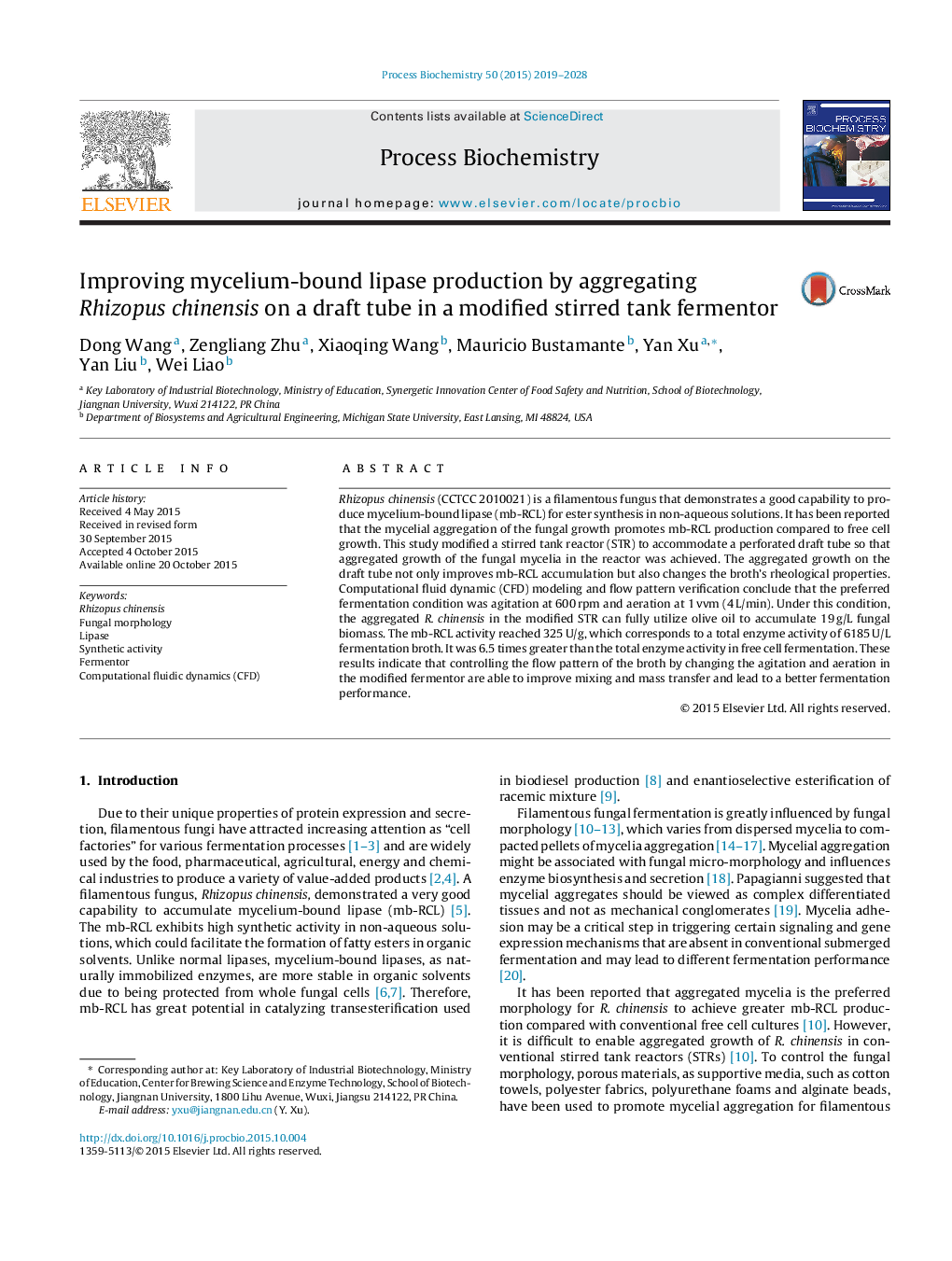| Article ID | Journal | Published Year | Pages | File Type |
|---|---|---|---|---|
| 34193 | Process Biochemistry | 2015 | 10 Pages |
•The STR with perforated draft tube realized the aggregated growth of R. chinensis.•The aggregated biomass can be easily separated from the tube.•Flow pattern is critical to the mb-RCL production in the modified STR.•The aggregated culture had 6.5 times greater mb-RCL productivity than the control.
Rhizopus chinensis (CCTCC 2010021) is a filamentous fungus that demonstrates a good capability to produce mycelium-bound lipase (mb-RCL) for ester synthesis in non-aqueous solutions. It has been reported that the mycelial aggregation of the fungal growth promotes mb-RCL production compared to free cell growth. This study modified a stirred tank reactor (STR) to accommodate a perforated draft tube so that aggregated growth of the fungal mycelia in the reactor was achieved. The aggregated growth on the draft tube not only improves mb-RCL accumulation but also changes the broth’s rheological properties. Computational fluid dynamic (CFD) modeling and flow pattern verification conclude that the preferred fermentation condition was agitation at 600 rpm and aeration at 1 vvm (4 L/min). Under this condition, the aggregated R. chinensis in the modified STR can fully utilize olive oil to accumulate 19 g/L fungal biomass. The mb-RCL activity reached 325 U/g, which corresponds to a total enzyme activity of 6185 U/L fermentation broth. It was 6.5 times greater than the total enzyme activity in free cell fermentation. These results indicate that controlling the flow pattern of the broth by changing the agitation and aeration in the modified fermentor are able to improve mixing and mass transfer and lead to a better fermentation performance.
Graphical abstractFigure optionsDownload full-size imageDownload as PowerPoint slide
